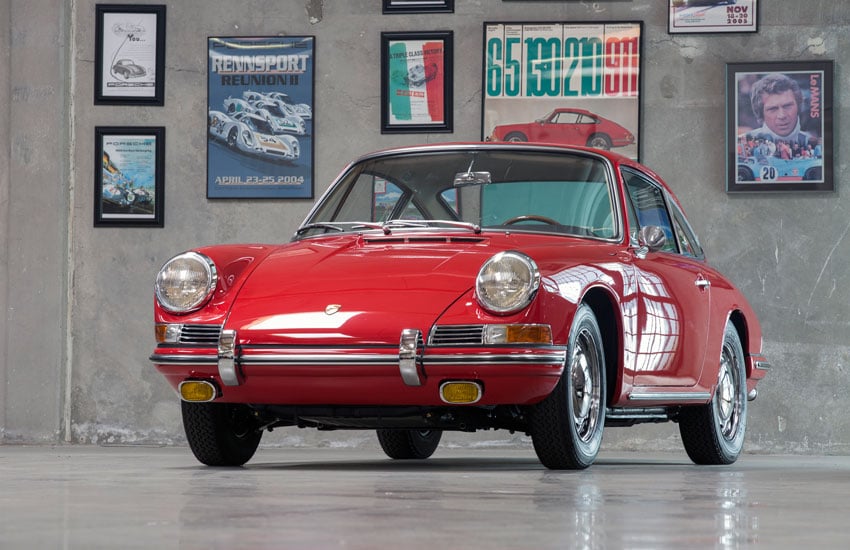“My original plan was to flare the wheel wells, put fat tires on it, and maybe even cut the top off turning it into a convertible,” Ron Barnes of Pensacola, Florida, recalled. “Fortunately I decided to concentrate on the engine first, because in doing so I discovered the significance of the serial numbers.”
It was 1984, and Barnes had just purchased a twenty-year old Porsche 911 in disrepair with a non-working motor. When he went to rebuild the 2.0-liter engine, he found it had a very low number, 900127. The chassis number on the car was even lower, 300018.
Barnes wrote letters about the car to Dale Miller at the Collier Automotive Museum and to Olaf Lang at the Porsche factory. After a little digging, he learned that his 911 not only was authentic with matching numbers motor, but it also was the 21st to roll off the production line in the fall of 1964.
Any early 911 is special, just like the legendary 356 model it replaced. What makes this Porsche even more so is that it is one of those originally designated as a 901. Production for that first year ran from September 14 to December 23. In November 1964, after a few dozen cars were assembled, Porsche changed the designation from 901 to 911 because Peugeot claimed exclusivity to the use of the number ‘0’ in the middle of any three-digit automobile designation sold in France.
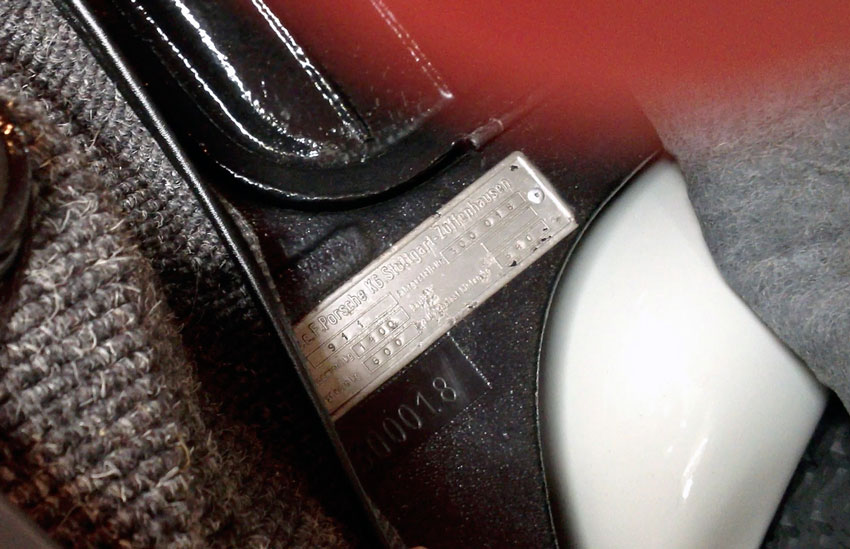
In 1989, Barnes had a minor traffic accident in the 901 that knocked the left rear tail light out. That led to a decision that the coupe was too rare to drive on the street, so he parked it for seventeen years. Its condition continued to decline until June 2006, when the red 901 ended up on eBay, looking a bit worse for wear with serious corrosion and faded red paint.
The eBay pictures showed that the car’s rear latch panel, which is flat on all 901s, had been replaced with a later indented one. Otherwise, the rare Porsche appeared to have survived intact. U.S. collectors Eade Hopkinson and Skip Shirley jumped on the car, intending to restore it to its former glory.
Instead, they sold 901 #018 on to fellow California collector, Don Murray in February 2007, because he was ready to make the investment to restore the car properly. Murray enlisted historians Freeman Thomas and Randy Leffingwell, with input from Jeff Zwart, Bob Fleming, Marco Marinello, and John Clinard, to sort out the car’s beginnings.
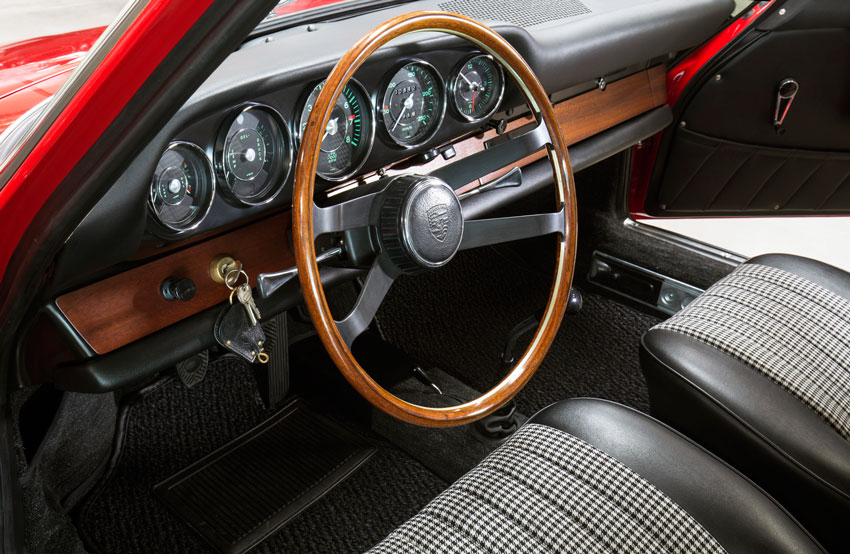
What they found was that the car rolled off the line in Stuttgart on October 2, 1964 with a Signal Red exterior, black interior with hounds tooth fabric covered seats, an antenna, loudspeaker, and radio shielding. On November 11 it arrived at the Baden-Auto dealership in nearby Freiburg. The first owner was a German doctor, and it was serviced regularly until December 28, 1965. From there the trail went cold until Barnes’ ownership in Florida.
Murray was pleased about the history and to find that the 901 had survived intact without modifications. He knew how important that is when restoring a unique Porsche. His list of cars includes a concours-winning 1952 Pre-A Cabriolet, 1955 550 RS Spyder, the last ‘59 Carrera Speedster made, a 1964 904 GTS, a 1970 914-6 GT racecar, an all-original 760-mile 1970 911S, a rare ‘71 Soft Window Targa, and the 25th ‘73 Carrera RS made.
“The car appealed to me because of its historical significance, being one of the earliest surviving 901s,” Murray reported. “It’s also one of the very earliest that still has its original motor and transmission.” This 901’s restoration had to be as correct as possible with the best quality craftsmanship. Murray felt there was only one man for the job, Alois Ruf in Germany.
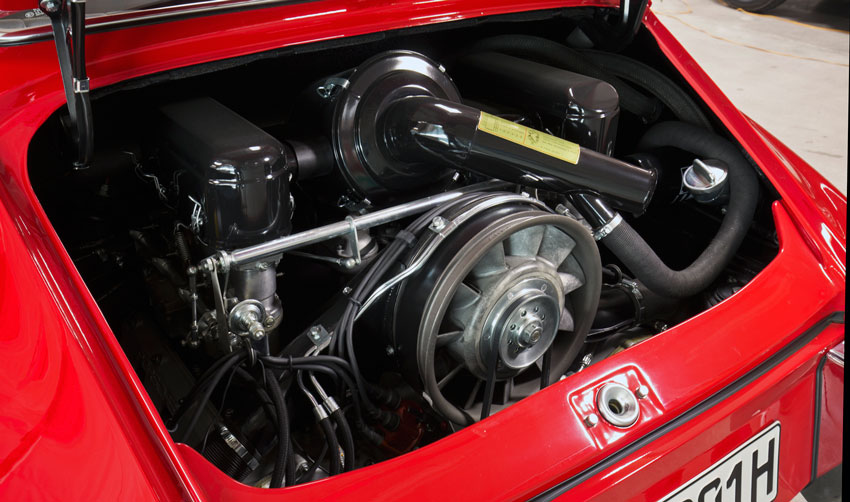
“I have a long-standing relationship with Alois and had seen two 901s that he had restored, including his blue car [#300037],” Murray said. So, in September 2008, he shipped 901 #018 to Ruf. Four years later, the restoration was complete. In June 2012, before returning the car to the U.S., Murray joined Ruf in Germany for a drive in their two 901s on winding Bavarian roads. Murray recalled, “It felt so right, as this is where the car came from and the type of roads it was meant for. It was a moving experience.”
Ruf shed some light on the long restoration, “Don’s 901 was the fourth that I have restored. (It) needed everything, but, yes, it was very original. The biggest challenge of this restoration was to repair and fabricate the correct panels. Much of restoring a 901 comes from getting all the little details correct, as there are so many unique elements not found on later 911s.”
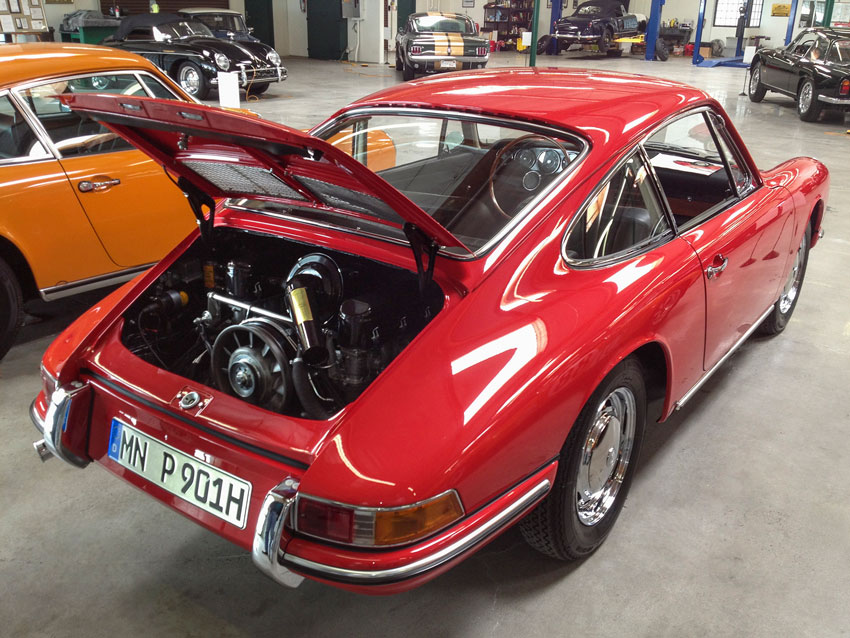
To this end, the rear latch panel was replaced with the correct part, as were the rusty front bumper and pan. Ruf refurbished the interior in the same manner. Murray found the owner’s manual and tool bag at the annual Porsche Literature Swap Meet, and Bob Smith found the correct 901 aluminum-framed wood steering wheel and some missing tools.
Number #018 has several details that differentiate it from later 911s. Like the handmade horn grilles that have no screws showing, the aluminum serial number plate just above the stamped chassis number, a release for the fuel filler flap that’s unique, headliner material on the A-pillars, a round end to the airbox snorkel, and no 911 script.
Not everyone appreciated all this attention to detail. When 901 #018 returned to the U.S. in time for the Amelia Island Concours in March 2013, a judge decided that the six rows of vertical pleats were incorrect for the seats. Unfortunately, he was wrong. Don’s 901 subsequently proved how correct it really was by winning Best in Class at the Dana Point and then at the San Marino Concours d’Elegance later that year.
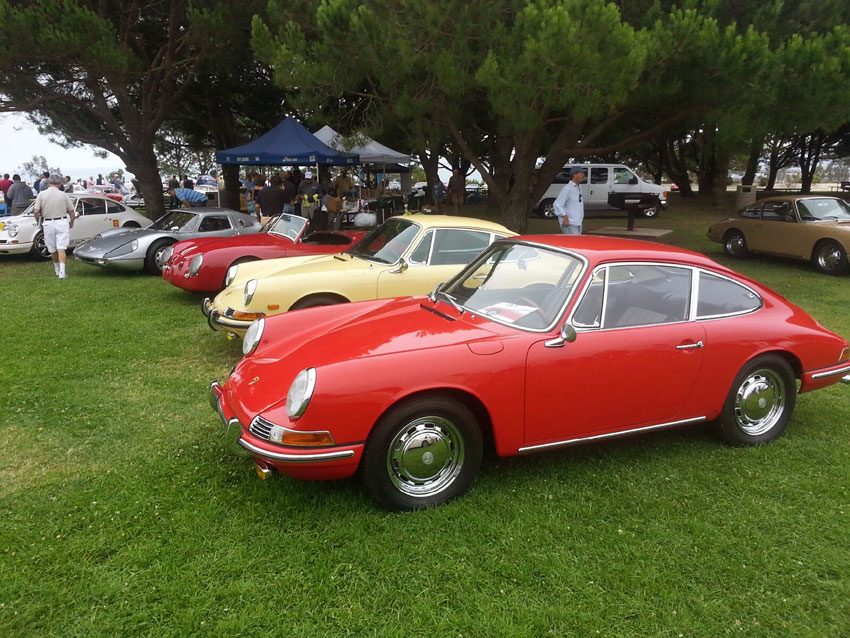
Interestingly, there are other 901s that were brought to America early on. Chassis #300012 is said to have appeared at an auto show in California in late October 1964 and stayed through mid-1965. Car #300032 was recently featured in Excellence Magazine. It was flown to California during November 1964, and raced most of its life on the west coast where it still resides. And 901 #300064 is described as having been imported to a U.S. Midwest dealer in early ‘65. And just this past month, chassis #300005 was unearthed.
Anniversaries always pull something out of the woodwork. It wouldn’t be surprising to hear about more 901s being published soon. Porsche first announced the 50th anniversary for their 911 more than a year ago. The only catch was that celebration was for a pre-production model shown at the 1963 Frankfurt Motor Show, a car with a non-operational engine and a 356 rear suspension.
For the first production 911s, named 901s, their golden anniversary has finally come. Fifty years ago last fall, the first series production 901s came off the factory line with the famous dry sump flat six air-cooled engine ready for customers to drive. This Porsche is one of the best surviving examples.
Copyright © 2015 Randy Wells. All Rights Reserved.

